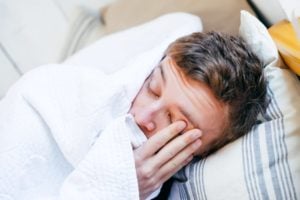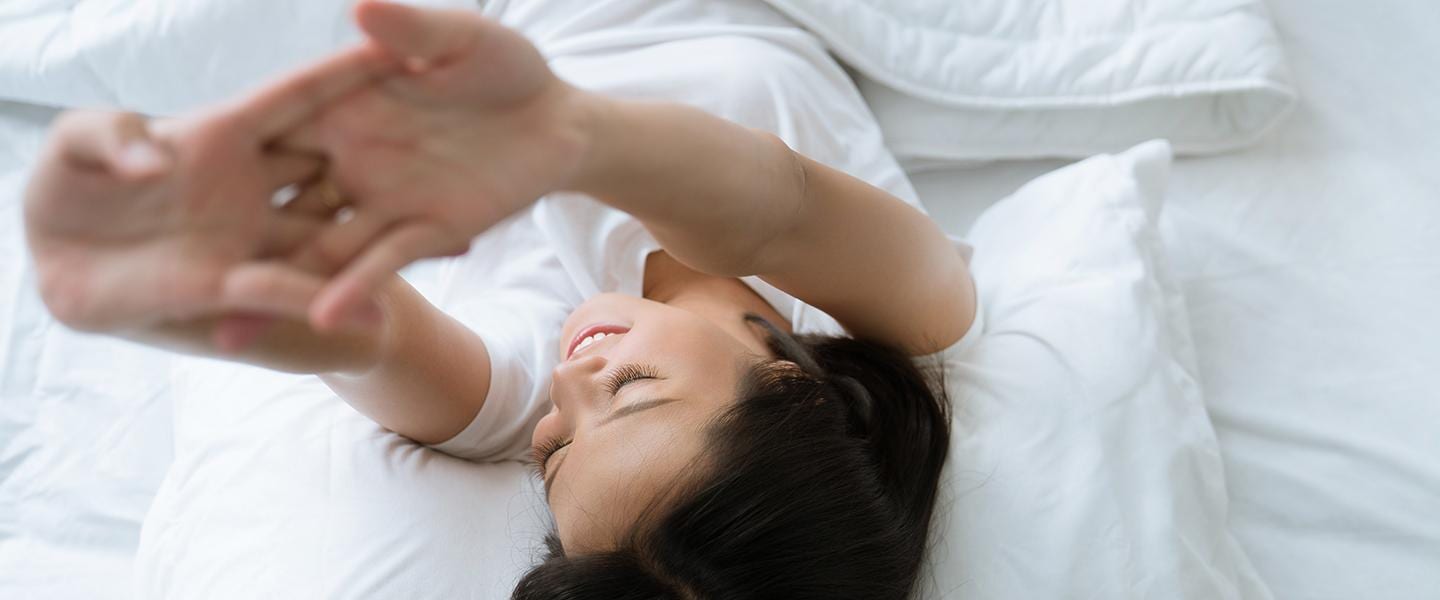Why Do We Need Sleep?
If you’ve stayed awake all night—by choice, out of necessity, or in spite of your efforts to sleep—you know just how critical sleep is to your wellbeing. Everyone needs sleep, but about one in three American adults don’t get enough of it.
The consequences of sleep deprivation are serious, so it’s worth learning why sleep matters, how it works, and how to give yourself the best chances of getting a good night’s sleep.
Why Getting Enough Sleep Is Important
Sleep is an essential function that allows your body and mind to recharge, leaving you refreshed and alert when you wake up. Healthy sleep also helps the body remain healthy and stave off diseases. Without enough sleep, the brain cannot function properly, impairing your abilities to concentrate, think clearly, and process memories.
Sleep serves a variety of important physical and psychological functions, including:
- Learning and memory consolidation: Sleep helps with focus and concentration—and it allows the brain to register and organize memories—all of which are vital to learning.
- Emotional regulation: Sleep helps people regulate their emotions and better manage the physical and psychological effects of stress.
- Judgment and decision making: Sleep influences a person’s ability to recognize danger and threats. Healthy sleep supports sound judgment, good decision making, and other executive functions.
- Problem solving: Research shows that “sleeping on” a complex problem improves a person’s chance of solving it.
- Energy conservation: Sleep allows people to conserve energy through an extended period of reduced activity.
- Growth and healing: Sleep provides the release of growth hormone necessary for the body’s tissues to grow and repair damage.
- Immunity: Sleep supports immune function, allowing the body to fight off diseases and infections.
The Science Behind Why We Sleep
Human beings, like all species on Earth, evolved to survive and thrive on a planet with a 24-hour cycle of day and night. According to some theories of sleep, sleeping in one consolidated block at night allowed early humans to simultaneously avoid predators, conserve energy, and meet their need for rest. It also kept them from having to adapt to life in two very different conditions—daylight and darkness.
The biological patterns that help humans live according to the 24-hour day-night cycle are called circadian rhythms. These rhythms work alongside the sleep drive—a desire to sleep that grows in intensity the longer a person has been awake—to cause people to feel sleepy at night and alert in the morning.
Circadian rhythms, including the sleep-wake cycle, operate according to environmental cues. Every evening, as darkness sets in, the body begins releasing the sleep hormone melatonin—and every morning, with the arrival of light, the body’s melatonin levels become undetectable. An evening drop and morning rise in body temperature accompanies this cycle, enhancing sleepiness and alertness at the right times.
Stages of Sleep
Our sleep architecture—that is, the way the body cycles through specific stages of sleep—enables the beneficial processes that occur during sleep, such as healing and learning. There are three non-rapid eye movement (non-REM) stages of sleep followed by rapid eye movement (REM), the final stage of sleep. Experiencing all four usually takes anywhere from 1.5 to 2 hours.
- Stage N1: This is the lightest stage of sleep, and it usually only lasts a few minutes.
- Stage N2: Healthy adults usually spend about half of the night in N2 sleep. While brain activity slows, there are bursts of activity that may help with memory retention and learning.
- Stage N3: N3 sleep, also called “slow wave sleep” or “deep sleep,” helps a person wake up feeling refreshed. During this stage, blood pressure lowers, heart rate and breathing rate slow, and the body secretes growth hormone. People generally spend about 10% to 20% of the night in this stage.
- REM Sleep: As its name suggests, people’s eyes intermittently move rapidly during this sleep stage. Most vivid dreaming takes place during REM sleep, and skeletal muscles become temporarily paralyzed to prevent a person from acting out their dreams. Memory consolidation occurs in this stage. It accounts for 20% to 25% of a typical night of sleep, with more of it occurring towards morning.
Healthy individuals cycle through all four stages of sleep multiple times a night. Regular sleep disruptions, as well as sleep disorders that affect sleep architecture like sleep apnea, can have serious consequences for physical health and mental health.
How Much Sleep Do I Need?
Experts generally recommend that adults get at least seven hours of sleep per night. However, sleep needs can vary dramatically from person to person. Your activity level, your health status, and many other factors influence how much sleep you need, but the optimal number of hours typically falls within a specific range depending on your age and stage in life.
| Age Group | Age Range | Recommended Amount of Sleep per Day |
|---|---|---|
| Infant | 4-12 months | 12-16 hours |
| Toddler | 1-2 years | 11-14 hours |
| Preschool | 3-5 years | 10-13 hours |
| School-age | 6-12 years | 9-12 hours |
| Teen | 13-18 years | 8-10 hours |
| Adult | 18 years and older | 7 hours or more |
The Effects of a Lack of Sleep
Not getting the amount of sleep your body needs can have serious consequences. Just one sleepless night can make it harder for you to focus and think clearly, and you might feel tired or sluggish during the day. You’re more likely to feel irritable and to exercise poor judgment when you haven’t had enough sleep. And sleep deprivation significantly elevates your risk of making a mistake at work or having a car accident.
Long-term sleep deprivation carries all these risks and more. Chronic insufficient sleep may:
- Suppress your immune system, increasing your susceptibility to sickness and infection
- Increase your risk of developing heart problems, type 2 diabetes, and high blood pressure
- Interfere with your metabolism and elevate your risk for obesity
- Cause your relationships to suffer at work and at home
- Lead to depression and anxiety
The effects of sleep debt compound quickly, so the sooner you can address sleep difficulties, the better.
How to Always Get a Good Night’s Sleep
The good news is that many sleep problems improve and even disappear when you take the right steps to treat them. Start by implementing healthy sleep hygiene practices at home.
- Get at least 20 minutes of exposure to natural light in the morning.
- Commit to a regular sleep schedule.
- Adopt a relaxing bedtime routine.
- Make sure your bedroom environment is cool, dark, quiet, and comfortable.
- Avoid electronics with screens in the hour before bed.
- Exercise regularly and early in the day.
- Avoid alcohol, nicotine, and caffeine in the hours before bed.
If you have trouble sleeping even after taking these steps, contact your doctor. With the right treatments, you can get the sleep your body needs.
References
7 Sources
-
Vandekerckhove, M., & Wang, Y. L. (2017). Emotion, emotion regulation and sleep: An intimate relationship. AIMS neuroscience, 5(1), 1–17.
https://pubmed.ncbi.nlm.nih.gov/32341948 -
Khan, M. A., & Al-Jahdali, H. (2023). The consequences of sleep deprivation on cognitive performance. Neurosciences (Riyadh, Saudi Arabia), 28(2), 91–99.
https://pubmed.ncbi.nlm.nih.gov/37045455/ -
Sio, U. N., Monaghan, P., & Ormerod, T. (2013). Sleep on it, but only if it is difficult: effects of sleep on problem solving. Memory & cognition, 41(2), 159–166.
http://link.springer.com/10.3758/s13421-012-0256-7 -
Freiberg A. S. (2020). Why We Sleep: A Hypothesis for an Ultimate or Evolutionary Origin for Sleep and Other Physiological Rhythms. Journal of circadian rhythms, 18, 2.
https://pubmed.ncbi.nlm.nih.gov/32269596 -
Kirsch, D. (2024, March). Stages and architecture of normal sleep. In S. Harding & A.Eichler (Ed.). UpToDate.
https://www.uptodate.com/contents/stages-and-architecture-of-normal-sleep -
Consensus Conference Panel, Watson, N. F., Badr, M. S., Belenky, G., Bliwise, D. L., Buxton, O. M., Buysse, D., Dinges, D. F., Gangwisch, J., Grandner, M. A., Kushida, C., Malhotra, R. K., Martin, J. L., Patel, S. R., Quan, S. F., Tasali, E., Non-Participating Observers, Twery, M., Croft, J. B., Maher, E., … Heald, J. L. (2015). Recommended amount of sleep for a healthy adult: A joint consensus statement of the American Academy of Sleep Medicine and Sleep Research Society. Journal of Clinical Sleep Medicine, 11(6), 591–592.
https://pubmed.ncbi.nlm.nih.gov/25979105/ -
Maski, K. (2024, March). Insufficient sleep: Evaluation and management. In T. Scammell & A. Eichler (Ed.). UpToDate.
https://www.uptodate.com/contents/insufficient-sleep-evaluation-and-management














































